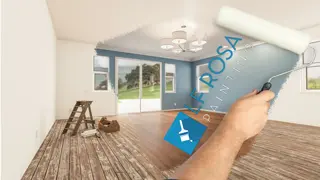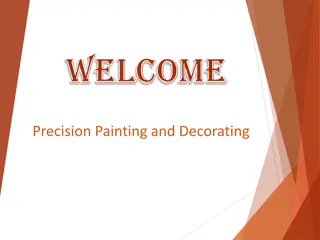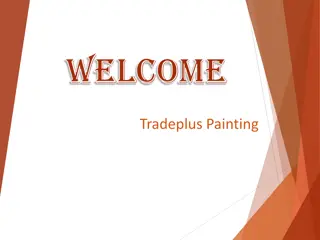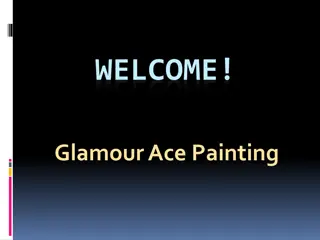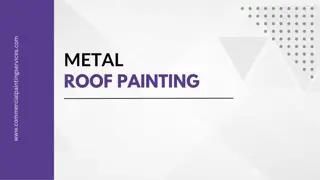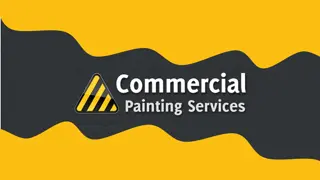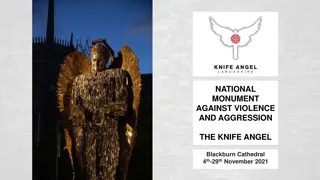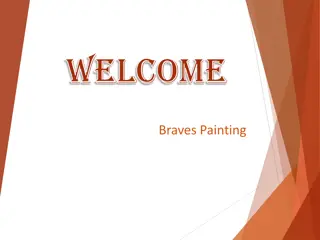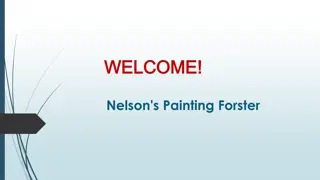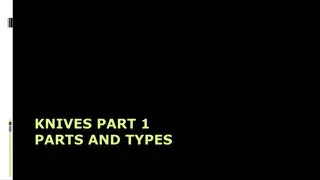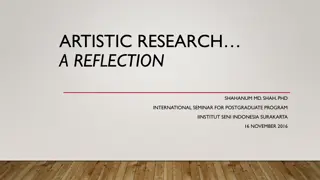Exploring Knife Painting: An Artistic Tradition Presented by Anu Jangala
Delve into the historical background and origins of knife painting through the traditional impasto technique, showcasing a rich texture and unique aesthetic. Discover how artists like Rembrandt, Titian, and Van Gogh utilized impasto for expressive and aesthetic purposes, leading to the creation of striking artworks. Learn about the tools involved, such as palette knives, and their significance in mixing and applying paint effectively.
Download Presentation

Please find below an Image/Link to download the presentation.
The content on the website is provided AS IS for your information and personal use only. It may not be sold, licensed, or shared on other websites without obtaining consent from the author. Download presentation by click this link. If you encounter any issues during the download, it is possible that the publisher has removed the file from their server.
E N D
Presentation Transcript
TOPIC: KNIFE PAINTING PRESENTED BY: ANU JANGALA K.V. SECTOR-8, R K PURAM, SECOND SHIFT
HISTORICAL BACKGROUND HISTORICAL BACKGROUND The Historical background and origin of Knife The Historical background and origin of Knife Painting can be traced out from the traditional Painting can be traced out from the traditional impasto technique used in painting impasto technique used in painting
HISTORICAL BACKGROUND HISTORICAL BACKGROUND In English, the borrowed Italian word In English, the borrowed Italian word impasto impasto most commonly refers to a most commonly refers to a technique used in technique used in painting painting, where paint is laid on an area of the surface (or the entire laid on an area of the surface (or the entire canvas) very thickly, usually thickly enough canvas) very thickly, usually thickly enough that the that the brush brush or or painting painting- -knife visible. Paint can also be mixed right on the visible. Paint can also be mixed right on the canvas. When dry, impasto provides texture, canvas. When dry, impasto provides texture, the paint appears to be coming the paint appears to be coming out canvas. canvas. , where paint is knife strokes are strokes are out of the of the
ARTISTS The first objective of impasto technique was The first objective of impasto technique was originally sought by masters such as originally sought by masters such as Rembrandt Rembrandt, , Titian Titian, and , and Vermeer folds in clothes or jewels: it was then folds in clothes or jewels: it was then juxtaposed with more delicate painting. Much juxtaposed with more delicate painting. Much later, the French later, the French Impressionists Impressionists created entire canvases of rich impasto textures. canvases of rich impasto textures. Vincent van Gogh Gogh used it frequently for aesthetics and used it frequently for aesthetics and expression. expression. Abstract expressionists Abstract expressionists such as Hans Hofmann Hans Hofmann and and Willem de Willem de Kooning made extensive use of it, motivated in part by a made extensive use of it, motivated in part by a desire to create paintings which dramatically desire to create paintings which dramatically record the "action" of record the "action" of painting itself. painting itself. Vermeer, to represent , to represent created entire Vincent van such as also Kooning also
KNIFE PAINTING TOOLS A palette knife palette knife is a blunt tool used for mixing or applying paint, with a flexible steel blade. It is primarily used for mixing paint colors, paste, etc., The "palette" in the name is a reference to an artist's palette which is used for mixing oil paint and acrylic paints. Art knives come primarily in two types: palette knife resembling a putty knife with a rounded tip, suited for mixing paints on the palette; painting knife with a pointed tip, lowered or "cranked" like a trowel, suited for painting on canvas.




